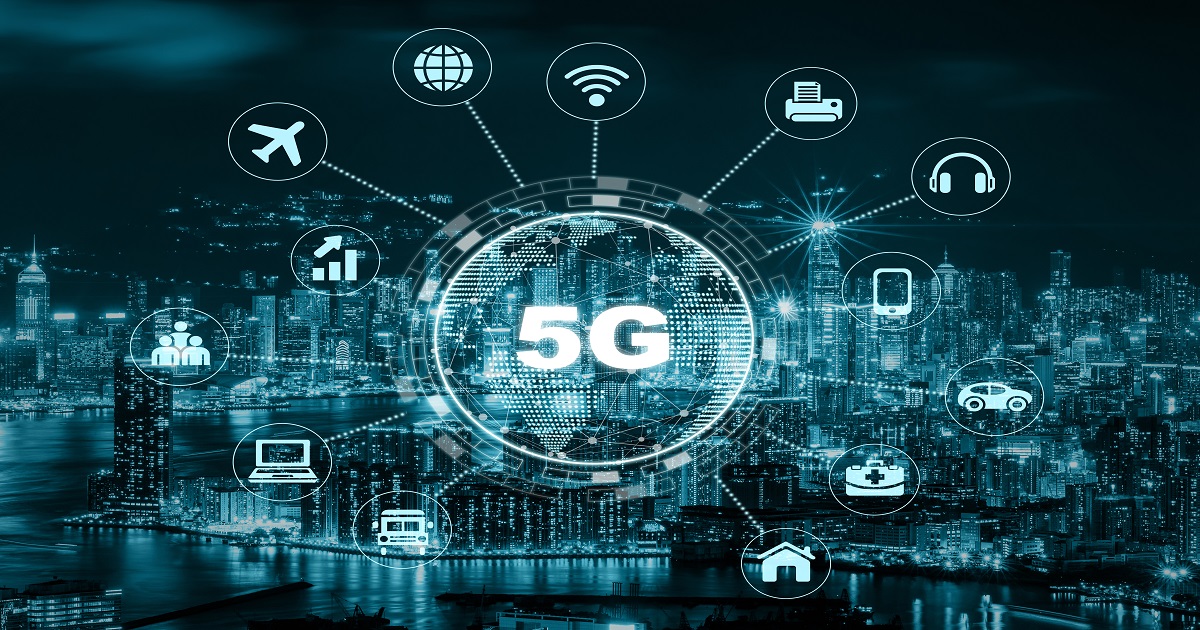
Yesterday, the long-promised Infrastructure Bill was finally signed into law by President Biden, following a successful negotiation across the aisle in Washington, DC.
One of the most exciting aspects of the bill is access to high-speed broadband, critical for the new world of digital learning and working.
During the pandemic, and now in the post-COVID-19 era, the educational landscape has sped into digitalization. All the way from nursery school to post-graduate and continuing education organizations, classrooms have gone digital and aren't looking back. Most educational institutions have adopted some form of the wide variety of innovative devices and applications now available for the benefit of both faculty and students alike.
This widespread adoption of technology has completely changed how teachers teach, and students learn, with many educational institutes looking at technology as an opportunity to build teaching methods and connect with students efficiently. At the primary and secondary levels, 93 percent of teachers are using digital tools to help guide instruction, with 56 percent believing data and digital tools make them a better teacher.
"Innovation in education has been tremendous," said Roy Timor-Rousso, Chief Revenue Officer at JpU, a company that has implemented "Enterprise 5G" in several school districts in the US, including a major university, with more projects in development. "Broadband absolutely unlocks the value of these interactive learning applications while also enabling new curriculum in STEM. Because of this rapid adoption of technology and other digital tools by educational institutions across the country, access to secure and dependable Internet connections has become essential for schools moving forward. This is a very exciting moment."
This reliable Internet connection can take the form of the relatively new 5G broadband networks that have been rolling out as of recently. 5G, or fifth-generation wireless technology, offers extremely low latency rates, which make for faster, smoother, and more reliable connections.
The integration of 5G networks into education delivery has the potential to revolutionize connectivity issues and streamline classroom logistics while improving the quality of the entire learning experience. It offers a myriad of benefits that would add ease as well as enjoyment to the learning experience for both teachers and students.
"5G broadband would help improve daily interactions between teachers and students, as well as improve collaboration among peers. When logging into digital classrooms, such as zoom, there is a high chance of lagging and breaking connectivity, which negatively impacts educational delivery. However, with 5G, video conferencing platforms can improve in quality and reliability around the globe," Timor-Rousso explained. (Timor-Rousso founded and sold Fring, an over-the-top, pure cloud-based voice, video, and messaging application seven years ago, and has deep experience in disruptive real-time communications innovation).
Teachers will save time by not having to work around delays in connectivity or breaks in audio and video connections and instead focus on the learner, while students will be able to download videos and learning materials faster and even have holograms of guest speakers in their classroom without dips or delays. Also, since 5G allows more data to be transferred, communication among peers for group projects will happen faster and with less lag, almost as if people across vast distances are sitting in the same room.
"Another benefit of the leveraging of 5G broadband by educational institutions is the accelerated adoption of immersive learning tools like Augmented Reality (AR) and Virtual Reality (VR)," Rousso went on to say. "Connected devices play an important part in creating real-time tactile stimulations. 5G broadband will be able to provide a greater network capacity and seamless experience that allows learners to explore complex concepts through zooming, pinching, and even touching, which is beneficial in recreating lab work and other hands-on experiences."
AR and VR technologies are now pioneering haptic responses into their devices, which would simulate the feeling, touch, or motion of interacting directly with a physical object. This would allow the introduction of tactile forms of learning to a classroom through traditional video conferencing platforms, making interactions richer.
"5G broadband-powered applications can also deliver more personalized learning experiences based on the students' preference," Timor-Rousso said. "Traditional education generally follows a one-size-fits-all approach that many say could hinder growth, but the adoption of 5G broadband networks would allow education organizations to create intelligent systems that understand the unique needs of each student and create targeted learning journeys."
Unfortunately, not every educational institution has the ability to adopt 5G broadband due to either price or location, while the same rings true for some students who live in impoverished areas. However, the educational digital divide is known as "the homework gap," may soon be defeated.
"With federated networking approaches – everything changes for the better," Timor-Rousso said. "This includes dramatically less expensive costs, in some cases up to 50% less expensive than legacy approaches. The right architecture and software, combined with solid cybersecurity solutions, can protect schools, teachers, and students, including ensuring their privacy is secure."
Help is on the way for educational institutions looking to upgrade their digital tools for the benefit of their students and their faculty, and the form is the recently passed US infrastructure bill currently. The massive infrastructure bill, which ended up being anywhere over one trillion USD, would invest roughly $65 billion in fast and reliable broadband infrastructure, affordability, and adoption for the whole country, including education.
The bill also takes into account infrastructure and broadband for education specifically, such as $12 billion to renew community college infrastructure. The bill also sets aside two billion just for The Rural Utilities Service, which aims to expand broadband infrastructure and service to rural areas, including distance learning broadband for schools that offer digital classes regularly now.
"Overall, the funding provided by the infrastructure bill is a major step in the right direction when it comes to providing educational opportunities for all," Timor-Rousso summarized. "Making sure all students have fair and equal access to the Internet will only enhance the learning experience. And while in-person learning will always be part of the mix, as the world continues to become more digital with every passing day, making sure institutions are able to adopt and leverage all devices and applications at their disposal to better the learning experience is critical."
Timor-Rousso will be sharing JpU's experience in rolling out Enterprise 5G networks in Santa Clara this week at the Enterprise 5G event. Learn more about the event here.
Edited by
Luke Bellos





